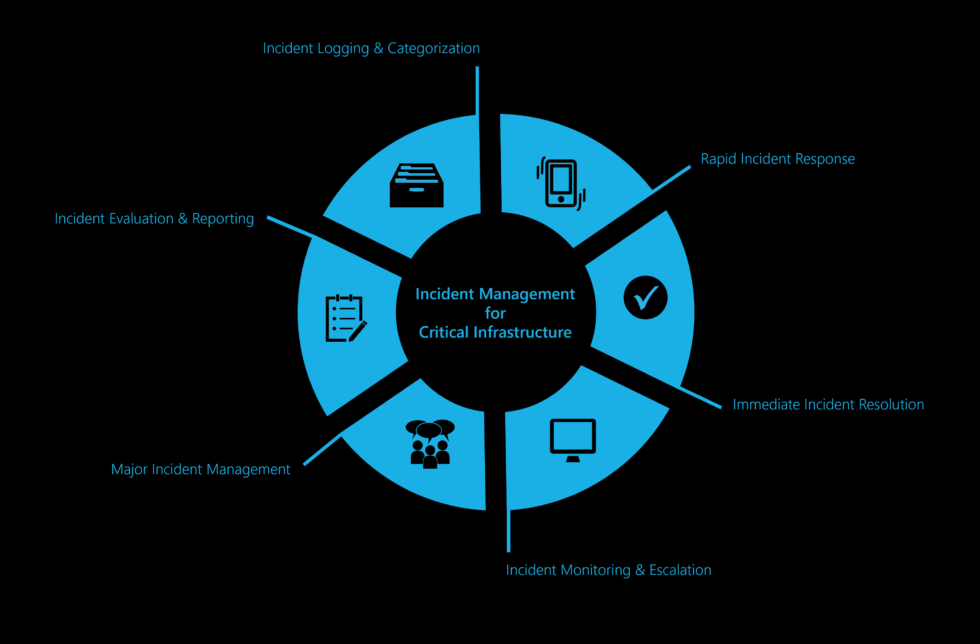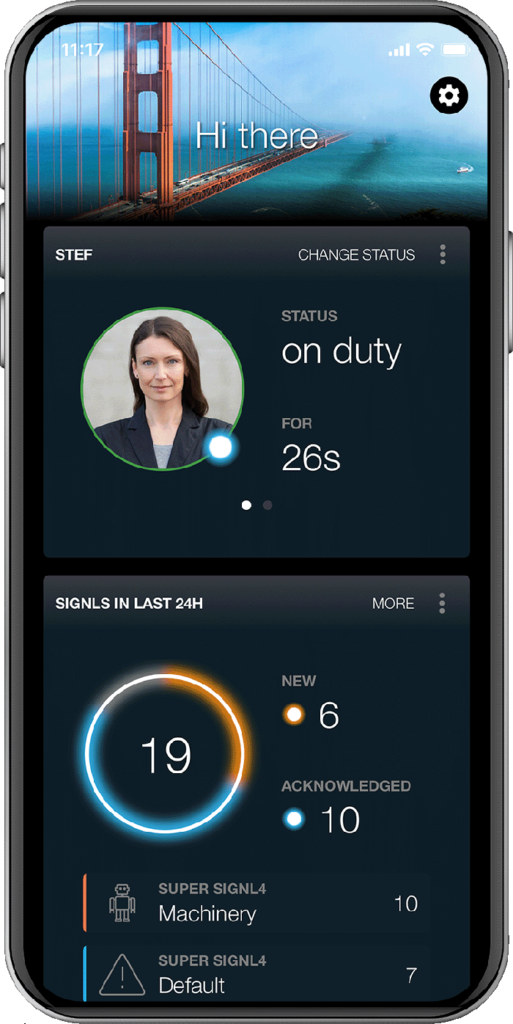Are you tired of dealing with IT incidents that seem to pop up at the worst possible times? Do you find yourself struggling to keep track of all the moving pieces involved in resolving incidents? If so, it’s time to revitalize your incident management strategy. In this article, we’ll explore the key pillars of incident process management, best practices, and how technology can help streamline your process.
Introduction
IT incident management is the process of detecting, diagnosing, and resolving IT incidents to minimize the impact on business operations (see for instance here for more details). IT incidents can range from hardware failures to software glitches to cyberattacks. The goal of incident management is to restore normal service operations as quickly as possible and minimize the impact on the business.
The incident management process typically involves identifying the incident, logging it, prioritizing it, investigating it, resolving it, and then closing it out. This process can be complex and involve multiple stakeholders, such as IT technicians, business owners, and customers.
The Importance of Best Practices
Best practices help organizations establish a consistent, repeatable process for managing incidents. By following best practices, organizations can improve the efficiency and effectiveness of their incident management activities. Some key best practices include:
- Establishing clear roles and responsibilities
- Defining and communicating policies and procedures
- Prioritizing incidents based on their impact on business operations
- Tracking incidents through a centralized system
- Implementing a continuous improvement process
By following these best practices, organizations can improve their incident response times, reduce the impact of incidents on business operations, and improve customer satisfaction.
Understanding Incident Management in ITIL
ITIL, or the Information Technology Infrastructure Library, is a set of best practices for IT service management. Incident management is one of the key processes defined in ITIL. The ITIL-defined process involves:
- Detecting incidents
- Logging incidents
- Categorizing incidents
- Prioritizing incidents
- Investigating and diagnosing incidents
- Resolving incidents
- Closing out incidents
ITIL also defines roles and responsibilities, such as the incident manager, the service desk, and the technical support team.
By following the ITIL process, organizations can establish a consistent, repeatable process for managing incidents and improve their incident response times.
Key Pillars of Incident Process Management
There are several key pillars of incident process management that organizations should consider when developing their incident management strategy. These include:
Communication
Effective communication is critical for incident management. Communication should be clear, concise, and timely. Incident management teams should establish communication protocols for notifying stakeholders of incidents and providing updates on the status of incidents.
Documentation
Accurate and thorough documentation is essential for incident management. Incident logs should include details such as the date and time of the incident, the impact of the incident on business operations, the steps taken to resolve the incident, and any follow-up actions that need to be taken.
Collaboration
Incident management often involves multiple stakeholders, such as IT technicians, business owners, and customers. Collaboration is essential for effective incident management. Incident management teams should establish processes for collaborating with stakeholders and resolving incidents.
Continuous Improvement
Continuous improvement is critical for success. Organizations should establish a process for reviewing and analyzing incidents to identify areas for improvement. Operational teams should also establish metrics and KPIs to measure the effectiveness of their activities.
Incident Management Framework and Its Components
A framework is a structured approach to managing incidents. Such framework typically includes several components, such as:
Incident Management Plan
An incident management plan outlines the organization’s approach to incident management. The plan should include details such as the roles and responsibilities of team members, the process, and communication protocols.
Incident Response Team
The incident response team is responsible for managing incidents. The team typically includes an incident manager, technical support staff, and business owners.
Tools
Tools help organizations manage incidents more effectively. These tools can include incident management software, alerting systems, and monitoring tools.
Metrics and KPIs
Metrics and KPIs help organizations measure the effectiveness of their activities. Key metrics might include incident resolution time, customer satisfaction, and incident volume.
Process Flow
The incident management process typically follows a structured flow, such as:
- Incident detection and logging
- Incident categorization and prioritization
- Investigation and diagnosis
- Incident resolution
- Incident closure, evaluation and reporting
Alternative flow descriptions are based on:
- Logging & Categorization
- Response
- Resolution
- Monitoring & Escalation (if resolution does not work or is not permanent)
- Major Incident Management (if the incident is of larger, more critical extent)
- Evaluation & Reporting
Each stage of the process involves specific activities and stakeholders. For example, incident detection and logging might involve the service desk, while incident resolution might involve technical support staff.

Metrics and KPIs
Metrics and KPIs help organizations measure the effectiveness of their incident management activities. Some common metrics and KPIs include:
- Volume: The total number of incidents over a given period of time
- Resolution time: The time it takes to resolve incidents
- Customer satisfaction: The level of satisfaction customers have with the incident management process
- Mean time to repair (MTTR): The average time it takes to repair incidents
- First call resolution rate (FCR): The percentage of incidents that are resolved on the first call
By tracking these metrics and KPIs, organizations can identify areas for improvement and measure the effectiveness of their activities.
Common Challenges Faced and Their Solutions
There are several common challenges that organizations face when managing incidents. These include:
Lack of visibility
Organizations may struggle to get a clear picture of incidents and their impact on business operations. This can lead to delays in incident resolution and customer dissatisfaction. To address this challenge, organizations should implement a centralized incident management system that provides real-time visibility into incidents and their status. SIGNL4 can help a great deal to improve visibility and transparency.
Lack of communication
Effective communication is critical. If communication channels are not established or clear, it can lead to delays in incident resolution, waste work and confusion among stakeholders. To address this challenge, organizations should establish clear communication protocols and ensure that all stakeholders are aware of them. Here too, SIGNL4 can play a major role, in particular as it can automate communication flows and processes and create an instant level of transparency.
Lack of resources
Organizations may not have the resources to effectively manage incidents, such as skilled technical support staff or incident management tools. To address this challenge, organizations should invest in incident management tools and technologies and ensure that their technical support staff have the necessary skills and training.
Lack of process
Organizations may not have a well-defined incident management process, leading to delays in incident resolution and inconsistent incident management practices. To address this challenge, organizations should establish a clear process and communicate it to all stakeholders.
Tools and Technologies
There are several tools and technologies that can help organizations improve their incident management process. These include:
Incident Management Software
Incident management software helps organizations manage incidents more effectively. These tools can automate processes, provide real-time visibility into incidents, and help organizations track incident metrics and KPIs.
Alerting Systems
Alerting systems help organizations detect and respond to incidents quickly. These systems can send alerts to teams when incidents occur and provide real-time updates on their status. SIGNL4 would fall into the category, but goes far beyond simple alerting.
Monitoring Tools
Monitoring tools help organizations proactively detect incidents before they impact business operations. These tools can monitor IT infrastructure, applications, and networks for potential issues and alert incident management teams when anomalies are detected.
SIGNL4 as an unique tool to streamline your IT Incident Management

SIGNL4 adds value to the entire incident management process. It provides for a communication and anywhere response layer, augmenting and enhancing multiple steps of the process.
SIGNL4 helps you in the following areas:
- SIGNL4 helps you to automatically log incidents from IT alerts to customer calls, and also reduces the amount of false alerts through filtering.
- It ensures a much more rapid response by real-time alerting via push, text and voice and delivering alerts to the right people at the right time based on an integrated, easy to use on-call scheduler.
- SIGNL4 enables collaboration between team members and stakeholders, allowing them to communicate and share information about an incident in real-time. This helps teams to work together to resolve incidents faster and more effectively.
- It facilities an immediate incident resolution by enabling a response from anywhere, just with your smartphone. Its mobile app is a great toolbox for a higher productivity of first responders.
- SIGNL4 automatically escalates incidents and reduces waste work in response and resolution tracking. it provides instant insights into any steps taken.
- With its comprehensive tracking, SIGNL4 helps to analyze your incident management process and to detect areas for improvement, leading to better response and management.
- On top, SIGNL4 also provides communication tooling for major incidents, ensuring rapid engagement and pro-active communication to stakeholders and affected users.
SIGNL4 is a unique and powerful communication solution to significantly improve, automate and accelerate your incident management processes.
Conclusion and the Future of Incident Management
Effective incident management is critical for organizations to minimize the impact of incidents on business operations and improve customer satisfaction. By following best practices, utilizing tools and technologies, and continuously improving their process, organizations can establish a consistent, repeatable process for managing incidents. By leveraging advanced tools, processes, and methodologies, businesses can detect, diagnose, and resolve incidents quickly and effectively, minimizing their impact on the business. As technology continues to evolve, modern incident management systems will become even more critical in helping businesses stay ahead of potential incidents and maintain high levels of service availability.
With real-time alerts, incident tracking, and collaboration features, SIGNL4 can help organizations manage incidents more effectively and improve their response times. If you wish to have a look at how SIGNL4 can benefit the revitalization of your incident management, discover its features or start a free trial.



